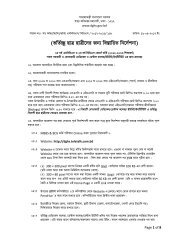Health Bulletin 2009
Health Bulletin 2009
Health Bulletin 2009
Create successful ePaper yourself
Turn your PDF publications into a flip-book with our unique Google optimized e-Paper software.
success. The relatively few intelligent and capable staffs are needed to engage in<br />
implementation of tightly scheduled HNPSP and bilateral donor (WHO and UNICEF)<br />
supported projects. The director needs to remain engaged lot of his time in attending<br />
meetings and workshops.<br />
The recommended actions for solution are:<br />
a. Freeing up MIS (health) office from manual system of data management as quickly<br />
as possible through ensuring all data feeding from sources where data are generated;<br />
b. Engaging MIS (health) staff on monitoring data quality (viz. coverage, completeness,<br />
accuracy, timeliness, etc.), analysis and report writing;<br />
c. Improving local capacity for data feeding: (i) establishing accountability of local health<br />
managers to send complete set of accurate and timely data online; (ii)making available<br />
computers and Internet connections in all remote points as quickly as possible; (iv)<br />
enhancing computer skills of as many persons as possible in remote points through<br />
local arrangements;<br />
d. Improving capacity of MIS (health): (i) providing short duration and continued training<br />
to existing staffs; (ii) deploying capable young and dynamic persons to empty positions<br />
without looking to seniority; (iii) deploying few additional personnel on deputation to<br />
support data analysis and report writing; (iv) hiring immediately full time skilled persons<br />
to support quick and immediate hardware and software development and trouble<br />
shooting.<br />
Weaknesses of MIS identified by World Bank Mission<br />
The Annual Project Implementation Review (APIR 2008) of HNPSP done by World Bank Mission<br />
identified following problems of MIS (health):<br />
a. Too many reporting formats;<br />
b. Lack of timely collection of program data;<br />
c. Lack of training plan on ICT to modernize MIS;<br />
d. Lack of use of information in decision making process.<br />
The observations truly reflect the current situation. Both in the fields as well as in the facilities there are<br />
multiple forms often on same subject. When a new form was introduced, it was not considered that an<br />
earlier form existed. So, both forms continued causing burden over the field workers, hospital staffs and<br />
managers. Line Directors lack coordination in setting schedule for data collection. LDs with field program<br />
have own separate data collection form(s). While the field workers could get all data in a single go to the<br />
particular family, due to different calendars sometimes imposed on ad hoc basis, they need to visit<br />
multiple times the same household in the same month. So, they become de-motivated and often produce<br />
data without visiting homes. Effort has been made to reduce number of data collection and reporting<br />
forms. As the data communication system is not automated and there always remains a human factor,<br />
the data sources need remainders, and monitoring and supervision to get data in time.<br />
136



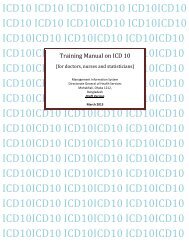




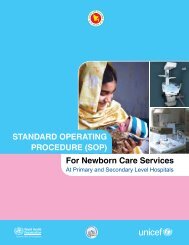
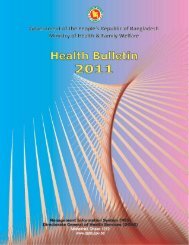
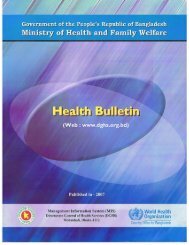
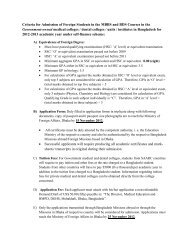
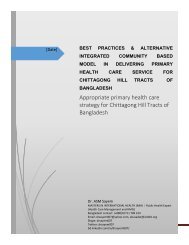
![Bangladesh Demographic and Health Survey 2007 [FR207]](https://img.yumpu.com/38440445/1/190x257/bangladesh-demographic-and-health-survey-2007-fr207.jpg?quality=85)
